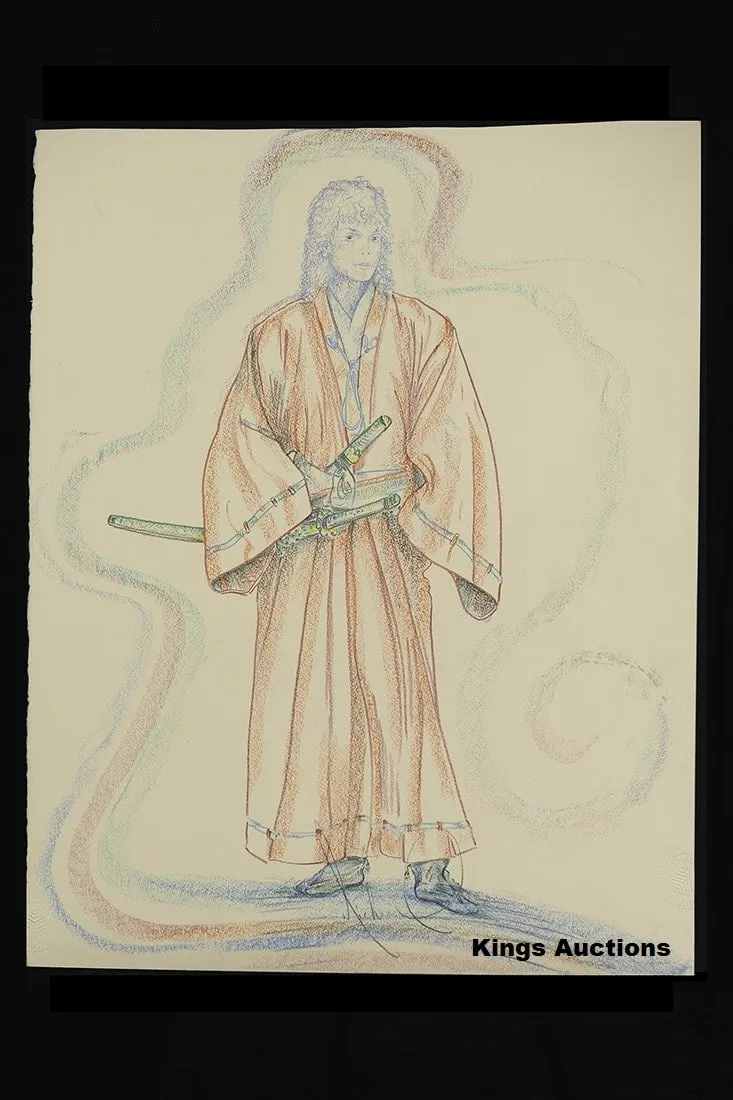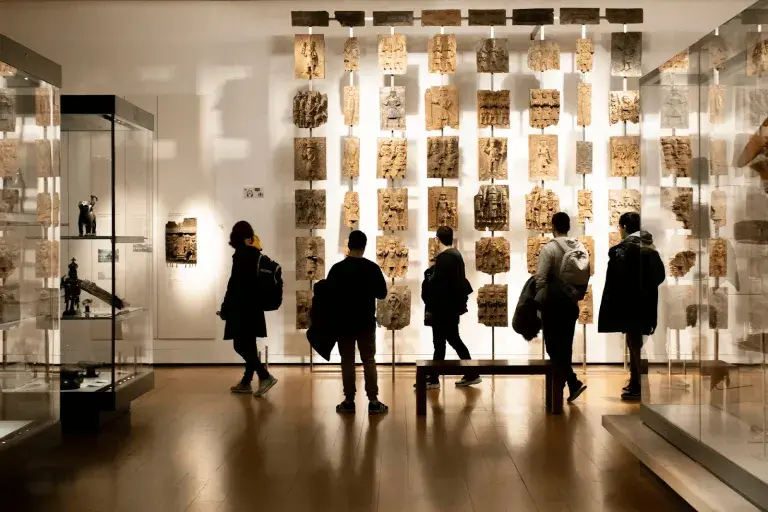Masters on the Market: Manjit Bawa

Like many in the mid-20th century, Indian artist Manjit Bawa traveled to Europe to work and study art. He found himself surrounded by the defining works of Cubism, Abstract Expressionism, and other increasingly popular movements. Unlike some of his contemporaries, though, Bawa was not impressed. Risking the curse of obscurity, Bawa nonetheless decided to ignore these modern trends in his own work. “Being a turbanned Sikh from an ordinary middle-class family was daunting enough but to strike out against the prevalent forces of Cubism and the iconic [Paul] Klee was to really ask for big trouble,” remembered Manjit Bawa.
When he returned to India, Bawa’s experiences helped him look inward instead of outward for inspiration. Foundational Hindu texts, such as the Mahabharata, became a major source of images and narratives for his work, along with the sacred text of Sikhism, the Guru Granth Sahib. Bawa also began utilizing the bright color palette that he associated with India.
This month, Bruneau & Co. Auctioneers will offer an ink drawing Manjit Bawa produced in 1991 (lot #24; estimate: USD 2,000 – $3,000). Five disparate figures line the piece, from a musician playing an instrument to a beast with its tongue sticking out. Bawa cared very little for elaborate backgrounds in his works. In this drawing, for example, Bawa lets the figures float next to each other on a plain, white backdrop. Flipping the piece over, collectors will discover this drawing decorates an invitation to a cocktail party. Artist M. F. Husain had recently earned the Padma Vibhushan, one of the highest honors in India for civilians. The party celebrated his accomplishment.

While some associate Bawa primarily with his paintings, drawing was a fundamental part of his process throughout his career. Before traveling to London, Bawa studied under Modern Indian painter Abani Sen in New Delhi. Manjit Bawa remembered how this teacher “would ask me to do 50 sketches every day, only to reject most of them. As a result I inculcated the habit of working continuously.” Years later, while viewing drawings by Michelangelo in an Amsterdam exhibit, Bawa’s mind wandered back to this strict regiment. He continued drawing in the decades that followed. Many of the pieces now offered by auction houses come from later in his career, particularly the 1990s.
In March, a late-career drawing by Manjit Bawa achieved $3,000 with Christie’s. The work depicts Narasimha, one of the incarnations of Vishnu, tearing into a demon that believed itself to be invincible. The part-lion, part-human appearance of Narasimha and the ease with which he kills the “invincible” demon serve as reminders in Hindu storytelling of the gods’ dominant power. Like the previous untitled drawing, Bawa again leaves these figures alone in an otherwise blank frame.

In many of his works, Manjit Bawa explored the idea of humanity, animals, and gods all occupying the same spaces. While they may be near each other physically, Bawa’s artworks probe at the vast disconnect between their circumstances. Last year, Saffronart presented an untitled painting by Bawa. The piece most likely depicts Krishna gazing out at the viewer. Below the god’s elbows is a lion. Beyond tame, the lion wraps around Krishna like a blanket, indicating the animal’s subservience to the gods. The red, monochromatic background juxtaposes against the white peacock feathers atop Krishna’s head and the lion’s equally light fur. This painting set a new auction record for a Manjit Bawa work when it achieved $880,000 with Saffronart in March of 2020.

Manjit Bawa’s career spanned many decades, and throughout, he returned to drawing. “I enjoy doing it, for it isn’t decorative and loud. One can use minimum essentials to extract the maximum effect,” Bawa attested. Decades of growing acclaim would open doors for Bawa to exhibit paintings in Paris, Singapore, and many other distant places. Yet one of the most enduring images of Manjit Bawa is still him as a young artist, scribbling hundreds of drawings in New Delhi for his teacher, Abani Sen. And then, just as quickly, discarding them in order to try again.
Bruneau & Co. Auctioneers’ fine art and antiques sale begins on August 19th, 2021 at 6:00 PM EDT. Those interested in placing a bid can register on Bidsquare.
Want to learn more about important Indian artists? Auction Daily recently looked at the work and auction history of Amrita Sher-Gil.










